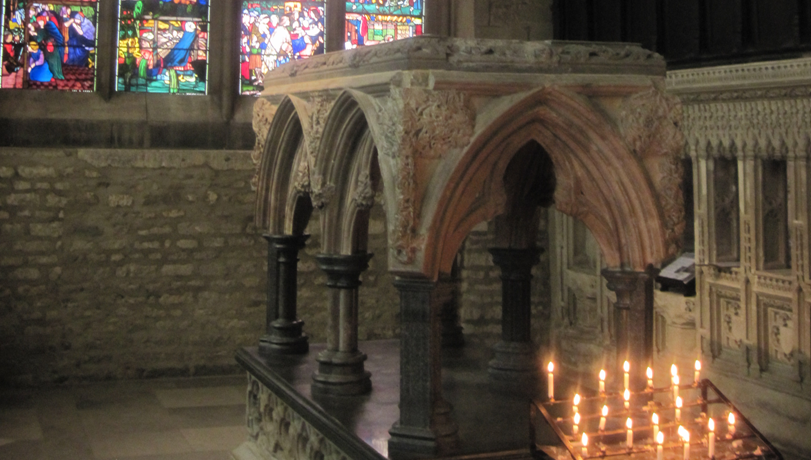"I saw in his hand a long spear of gold, and at the iron’s point there seemed to be a little fire. He appeared to me to be thrusting it at times into my heart, and to pierce my very entrails; when he drew it out, he seemed to draw them out also, and to leave me all on fire with a great love of God. The pain was so great, that it made me moan; and yet so surpassing was the sweetness of this excessive pain, that I could not wish to be rid of it..."
Teresa spent much of the rest of her life writing several books on theological subjects, including prayer, aestheticism, mysticism, and the soul, all in reaction to her visions. Her new thinking lead her to push reform for the Carmelite Order in Spain. She began to establish new monasteries under a rule even more strict than the regular rule. The first of such monasteries was the convent of San Jose in Avila, its members taking a vow of absolute, apostolic poverty. They lived among and for the poor, and since they were shoe-less they came to be known as the "Discalced Carmelites." Throughout the 1560s, Teresa was granted permission to spread her order, which was unpopular because of its renunciation of property, not only on an individual basis but on a communal basis. Teresa, joined by another mystic, St. John of the Cross, traveled all over Spain and established monasteries for both men and women. The last of her seventeen convents was the Convent of the Annunciation in Alba de Torres, where she also spent time on writing about her visions and revelations before her death.
The example that St. Teresa has left for the Church is essential to the Church's mission; to its likeness to Christ. It is the willingness of people like Teresa to live to help other, dedicating their lives to do Christ's work, that helps carry the Church from generation to generation. The Church is the body of Christ, and therefore its actions must be as true to Christ's actions as the human condition permits. St. Teresa's mission embodies a reciprocal relationship: the Church's duty is to draw people under its protective wing, in doing so it must comfort them with the saving words of Christ, and in doing that it draws them into his body; the Church.
Merciful God, who by your spirit raised up your servant Teresa of Avila to reveal to your Church the way of perfection: grant that her teaching may awaken in us a longing for holiness, until we attain to the perfect union of love in Jesus Christ your Son our Lord, who is alive and reigns with you in the unity of the Holy Spirit, one God, now and forever. Amen
-Festivals and Lesser Festivals of the Church of England.
In just 2008, the first Carmelite convent in the Episcopal Church was established in Rising Sun Maryland. The Convent is dedicated as The Episcopal Carmel of St. Teresa of Avila. It is a growing community, and it serves as a first for a hopeful revival in the Anglican Church for the religious life, dedicated to the work of Christ and prayer for our Church and our world.


No comments:
Post a Comment